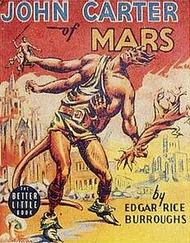Andrew Lang - John Knox and the Reformation
Здесь есть возможность читать онлайн «Andrew Lang - John Knox and the Reformation» — ознакомительный отрывок электронной книги совершенно бесплатно, а после прочтения отрывка купить полную версию. В некоторых случаях можно слушать аудио, скачать через торрент в формате fb2 и присутствует краткое содержание. Жанр: foreign_antique, foreign_prose, на английском языке. Описание произведения, (предисловие) а так же отзывы посетителей доступны на портале библиотеки ЛибКат.
- Название:John Knox and the Reformation
- Автор:
- Жанр:
- Год:неизвестен
- ISBN:нет данных
- Рейтинг книги:4 / 5. Голосов: 1
-
Избранное:Добавить в избранное
- Отзывы:
-
Ваша оценка:
- 80
- 1
- 2
- 3
- 4
- 5
John Knox and the Reformation: краткое содержание, описание и аннотация
Предлагаем к чтению аннотацию, описание, краткое содержание или предисловие (зависит от того, что написал сам автор книги «John Knox and the Reformation»). Если вы не нашли необходимую информацию о книге — напишите в комментариях, мы постараемся отыскать её.
John Knox and the Reformation — читать онлайн ознакомительный отрывок
Ниже представлен текст книги, разбитый по страницам. Система сохранения места последней прочитанной страницы, позволяет с удобством читать онлайн бесплатно книгу «John Knox and the Reformation», без необходимости каждый раз заново искать на чём Вы остановились. Поставьте закладку, и сможете в любой момент перейти на страницу, на которой закончили чтение.
Интервал:
Закладка:
Knox gives a much more full account of his own controversies, in April-June 1547, than of political events. He first, on arrival at the castle, drew up a catechism for his pupils, and publicly catechised them on its tenets, in the parish kirk in South Street. It is unfortunate that we do not possess this catechism. At the time when he wrote, Knox was possibly more of “Martin’s” mind, as he familiarly terms Luther, both as to the Sacrament and as to the Order of Bishops, than he was after his residence in Geneva. Wishart, however, was well acquainted with Helvetic doctrine; he had, as we saw, translated a Helvetic Confession of Faith, perhaps with the view of introducing it into Scotland, and Knox may already have imbibed Calvinism from him. He was not yet – he never was – a full-blown Presbyterian, and, while thinking nothing of “orders,” would not have rejected a bishop, if the bishop preached and was of godly and frugal life. Already sermons were the most important part of public worship in the mind of Knox.
In addition to public catechising he publicly expounded, and lectured on the Fourth Gospel, in the chapel of the castle. He doubted if he had “a lawful vocation” to preach . The castle pulpit was then occupied by an ex-friar named Rough. This divine, later burned in England, preached a sermon declaring a doctrine accepted by Knox, namely, that any congregation could call on any man in whom they “espied the gifts of God” to be their preacher; he offered Knox the post, and all present agreed. Knox wept, and for days his gloom declared his sense of his responsibility: such was “his holy vocation.” The garrison was, confessedly, brutal, licentious, and rapacious, but they “all” partook of the holy Communion. 31 31 Knox , i. 201.
In controversy, Knox declared the Church to be “the synagogue of Satan,” and in the Pope he detected and denounced “the Man of Sin.” On the following Sunday he proved, from Daniel, that the Roman Church is “that last Beast.” The Church is also anti-Christ, and “the Hoore of Babylon,” and Knox dilated on the personal misconduct of Popes and “all shavelings for the most part.” He contrasted Justification by Faith with the customs of pardons and pilgrimages.
After these remarks, a controversy was held between Knox and the sub-prior, Wynram, the Scottish Vicar of Bray, Knox being understood to maintain that no bishop who did not preach was really a bishop; that the Mass is “abominable idolatry”; that Purgatory does not exist; and that the tithes are not necessarily the property of churchmen – a doctrine very welcome to the hungry nobles of Scotland. Knox, of course, easily overcame an ignorant opponent, a friar, who joined in the fray. His own arguments he later found time to write out fully in the French galleys, in which he was a prisoner, after the fall of the castle. If he “wrate in the galleys,” as he says, they cannot have been always such floating hells as they are usually reckoned.
That Knox, and other captives from the castle, were placed in the galleys after their surrender, was an abominable stretch of French power. They were not subjects of France. The terms on which they surrendered are not exactly known. Knox avers that they were to be free to live in France, and that, if they wished to leave, they were to be conveyed, at French expense, to any country except Scotland. Buchanan declares that only the lives of the garrison and their friends were secured by the terms of surrender. Lesley supports Knox, 32 32 Leonti Strozzio , incolumitatem modo pacti , se dediderunt , writes Buchanan. Professor Hume Brown says that Buchanan evidently confirms Knox; but incolumitas means security for bare life, and nothing more. Lesley says that the terms asked were life and fortune, salvi cum fortunis , but the terms granted were but safety in life and limb, and, it seems, freedom to depart, ut soli homines integri discederent . If Lesley, a Catholic historian, is right, and if by discederent he means “go freely away,” the French broke the terms of surrender.
who is probably accurate.
To account for the French severity, Knox tells us that the Pope insisted on it, appealing to both the Scottish and French Governments; and Scotland sent an envoy to France to beg “that those of the castle should be sharply handled.” Men of birth were imprisoned, the rest went to the galleys. Knox’s life cannot have been so bad as that of the Huguenot galley slaves under Louis XIV. He was allowed to receive letters; he read and commented on a treatise written in prison by Balnaves; and he even wrote a theological work, unless this work was his commentary on Balnaves. These things can only have been possible when the galleys were not on active service. In a very manly spirit, he never dilated on his sufferings, and merely alludes to “the torment I sustained in the galleys.” He kept up his heart, always prophesying deliverance; and once (June, 1548?), when in view of St. Andrews, declared that he should preach again in the kirk where his career began. Unluckily, the person to whom he spoke, at a moment when he himself was dangerously ill, denied that he had ever been in the galleys at all! 33 33 Knox , i. 206, 228.
He was Sir James Balfour, a notorious scoundrel, quite untrustworthy; according to Knox, he had spoken of the prophecy, in Scotland, long before its fulfilment.
Knox’s health was more or less undermined, while his spiritual temper was not mollified by nineteen months of the galleys, mitigated as they obviously were.
It is, doubtless, to his “torment” in the galleys that Knox refers when he writes: “I know how hard the battle is between the spirit and the flesh, under the heavy cross of affliction, where no worldly defence, but present death, does appear… Rests only Faith, provoking us to call earnestly, and pray for assistance of God’s spirit, wherein if we continue, our most desperate calamities shall turn to gladness, and to a prosperous end… With experience I write this.”
In February or March, 1549, Knox was released; by April he was in England, and, while Edward VI. lived, was in comparative safety.
CHAPTER IV: KNOX IN ENGLAND: THE BLACK RUBRIC: EXILE: 1549-1554
Knox at once appeared in England in a character revolting to the later Presbyterian conscience, which he helped to educate. The State permitted no cleric to preach without a Royal license, and Knox was now a State licensed preacher at Berwick, one of many “State officials with a specified mission.” He was an agent of the English administration, then engaged in forcing a detested religion on the majority of the English people. But he candidly took his own line, indifferent to the compromises of the rulers in that chaos of shifting opinions. For example, the Prayer Book of Edward VI. at that time took for granted kneeling as the appropriate attitude for communicants. Knox, at Berwick, on the other hand, bade his congregation sit, as he conceived that to have been the usage at the first institution of the rite. Possibly the Apostles, in fact, supped in a recumbent attitude, as Cranmer justly remarked later (John xiii. 25), but Knox supposed them to have sat. In a letter to his Berwick flock, he reminds them of his practice on this point; but he would not dissent from kneeling if “magistrates make known, as that they” (would?) “have done if ministers were willing to do their duties, that kneeling is not retained in the Lord’s Supper for maintenance of any superstition,” much less as “adoration of the Lord’s Supper.” This, “for a time,” would content him: and this he obtained. 34 34 Lorimer, John Knox and the Church of England, 261.
Here Knox appears to make the civil authority – “the magistrates” – governors of the Church, while at the same time he does not in practice obey them unless they accept his conditions.
Интервал:
Закладка:
Похожие книги на «John Knox and the Reformation»
Представляем Вашему вниманию похожие книги на «John Knox and the Reformation» списком для выбора. Мы отобрали схожую по названию и смыслу литературу в надежде предоставить читателям больше вариантов отыскать новые, интересные, ещё непрочитанные произведения.
Обсуждение, отзывы о книге «John Knox and the Reformation» и просто собственные мнения читателей. Оставьте ваши комментарии, напишите, что Вы думаете о произведении, его смысле или главных героях. Укажите что конкретно понравилось, а что нет, и почему Вы так считаете.











